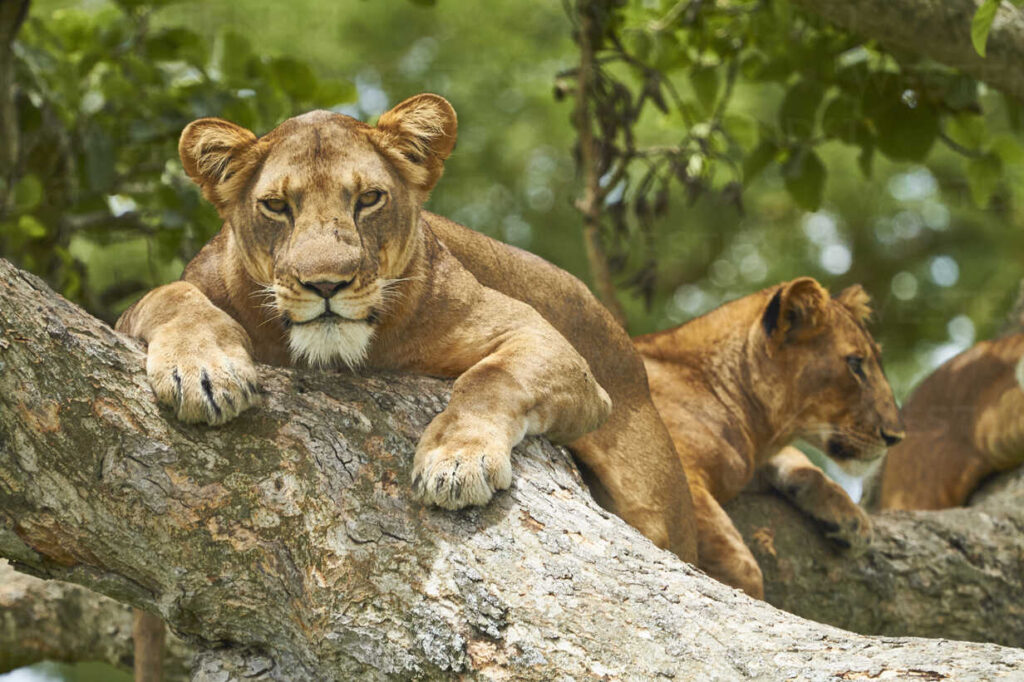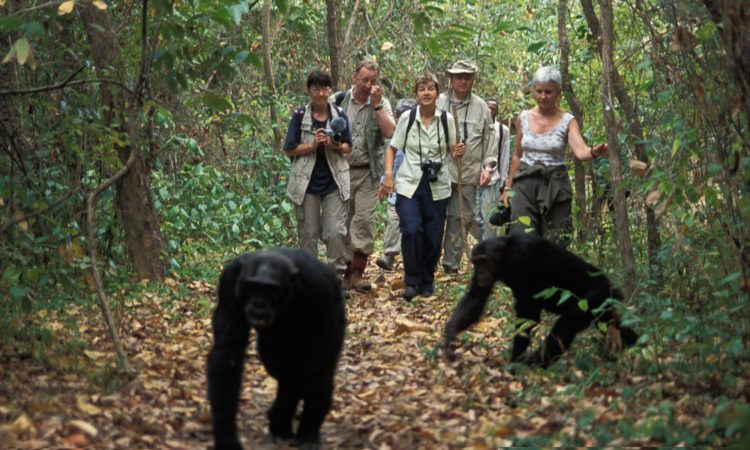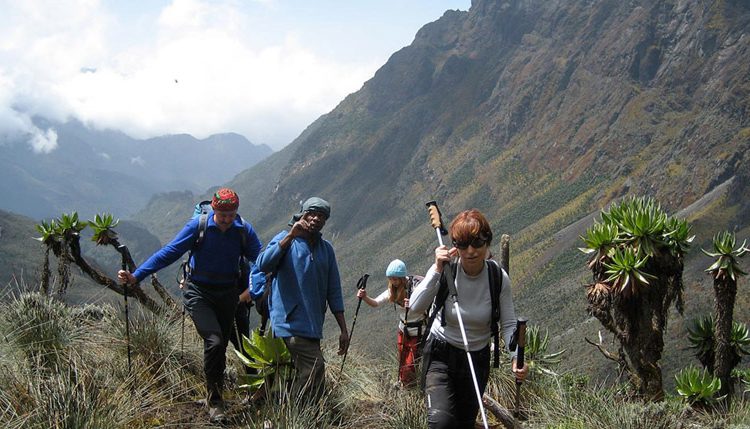
Queen Elizabeth national park wildlife
Queen Elizabeth national park wildlife
Queen Elizabeth national park wildlife : Queen Elizabeth National Park is a great wildlife safari destination in Uganda protecting a huge population of wildlife, the park is one of the most famous National parks in Uganda. Queen Elizabeth National Park is located in the western region of Uganda, this beautiful park is named after the late Queen Elizabeth of England to commemorate her visit to Uganda in 1952.
Queen Elizabeth National Park hosts a diverse eco-systems supporting a variety of wildlife recorded up to 95 mammals, wildlife in the park include four of the Big Five that is lions, leopards, buffaloes and elephants. Other animals include Uganda Kobs, Oribis, Giant Forest Hog, and antelope species like Uganda Kobs, Oribis, Topi, bushbuck, sitatungas and many more.

Africa, Uganda, Fort Portal, Elizabeth National Park, lions lying on a tree
Queen Elizabeth national park is dominated with diverse habitats including grasslands, savannahs, forests, wetlands and lakes which provide a great setting of an extensive range of large mammals, primates and birds.
The Game
Queen Elizabeth National Park is a great destination for game viewing in Uganda and it is internationally known for its abundant and unique selection of big animals, the park hosts over 500 hippos that can be found and seen along the shorelines of waterbodies like Kazinga Channel – a water channel connecting Lake George to Lake Edward.
Queen Elizabeth National Park hosts a huge population of elephants with over 2500 Africa elephant individuals, African elephants are one of the big Five family member identified by their unique ears which are in a shape of the map of Africa, these elephants are very common in Queen Elizabeth National Park and are easily spotted along the Kazinga Channels and savannah grasslands of the park.
Queen Elizabeth National Park is recognized for hosting the highest number of buffaloes in East Africa with over 1000 buffaloes individuals, buffaloes live in herds / groups and you can easily see them strolling through the savannah plains of the park in Kasenyi plains and along the banks of the Kazinga Channel.
Other game in Queen Elizabeth National Park include topis, warthogs, waterbucks, Uganda kobs. These animals are commonly found in Kasenyi plains, Mweya sector/ Peninsular, along the banks of Kazinga Channel and others areas of the park.
Primates
Queen Elizabeth National park is endowed with a number of primate species thriving in the diverse habitats of the park, these primates include chimpanzees, red tailed monkeys, black and white colobus monkeys, vervet monkeys and olive baboons.

Primates in Queen Elizabeth National Park are found in The Kyambura gorge (Kyambura game reserve) and Maramagambo forest, The Kyambura Gorge is hidden forest of tropical and riverine forests in gorge of 1 kilometers across at its broadest point and 100 meters deep in the Kichwamba escarpment.
Kyambura Gorge also known as The Valley of Apes is found in the far Eastern Corner of Queen Elizabeth National Park approximately 30 kilometers from the park’s headquarters.
Carnivores / big cats
Queen Elizabeth National Park is a home to most fallacious feline animals including lions, leopards, civet, genal and serval cats. Queen Elizabeth National Park is famous for hosting the rare tree climbing lions found in the Ishasha Sector (Southern region of the park), the tree climbing lions can be seen lounging on fig tree branches.
Other big cats like leopards are solitary animals and they are commonly seen during the night game drive while hunting.
Birdlife/ Avian Life
Queen Elizabeth National Park is recognized for hosting a huge bird population in Africa with over 600 birds including endemic species and migratory species.
Birds in Queen Elizabeth National Park are found in several areas in the park including the Kazinga Channel, Kalinzu forest, Maramagambo forest, Kyambura gorge among other.

Notable birds in Queen Elizabeth National Park include Malachite and Pied Kingfishers, White-winged Terns, Swamp Fly-catcher, Grey-capped Warbler, Grey-headed Kingfisher, Collard Pranticole, African Jacana, Pin-tailed Whydah, Martial Eagle, Gabon and Slender-tailed Nightjars, the lovely Black-headed Gonolek, Great and Long-tailed Cormorants, Common Squacco Heron, African Skimmer, African Fish Eagle, Verreaux’s Eagle-Owl, Sedge Warbler, White-winged Warbler, Papyrus Gonolek, Papyrus Canary, Great White and Pink-backed Pelicans, African Mourning Dove, African Open-billed Stork, Black-rumped Buttonquail, Yellow-billed, open-billed and Marabou Storks, Egyptian Goose, a number of Gull species among others.
Best time to visit Queen Elizabeth National Park for Wildlife Viewing
Best time for wildlife viewing in Queen Elizabeth National Park is during the dry season, though the park can be visited all year round. In the dry season, the vegetation cover is thin which makes it easy to spot wildlife and also the animals congregate at the remaining watering holes in the park making it easy to see the animals drinking water.
In the wet season, it is possible to see the animals, however your game viewing experience can be interrupted by rain and the routes get to be slippery.
Where to stay in Queen Elizabeth National Park
There is a variety of accommodation facilities in Queen Elizabeth National Park ranging from Luxury, Mid-range and budget and these are as follows
- Luxury: Mweya Safari Lodge, Katara Lodge, Kyambura Gorge Lodge, Ishasha Wilderness Camp
- Mid-range: Kingfisher Lodge, Ihamba Lodge, Kasenyi Safari Camp, Marafiki Safari Lodge
- Budget: The Bush Lodge, Simba Safari Camp, Pumba Safari Cottages – Kyambura





